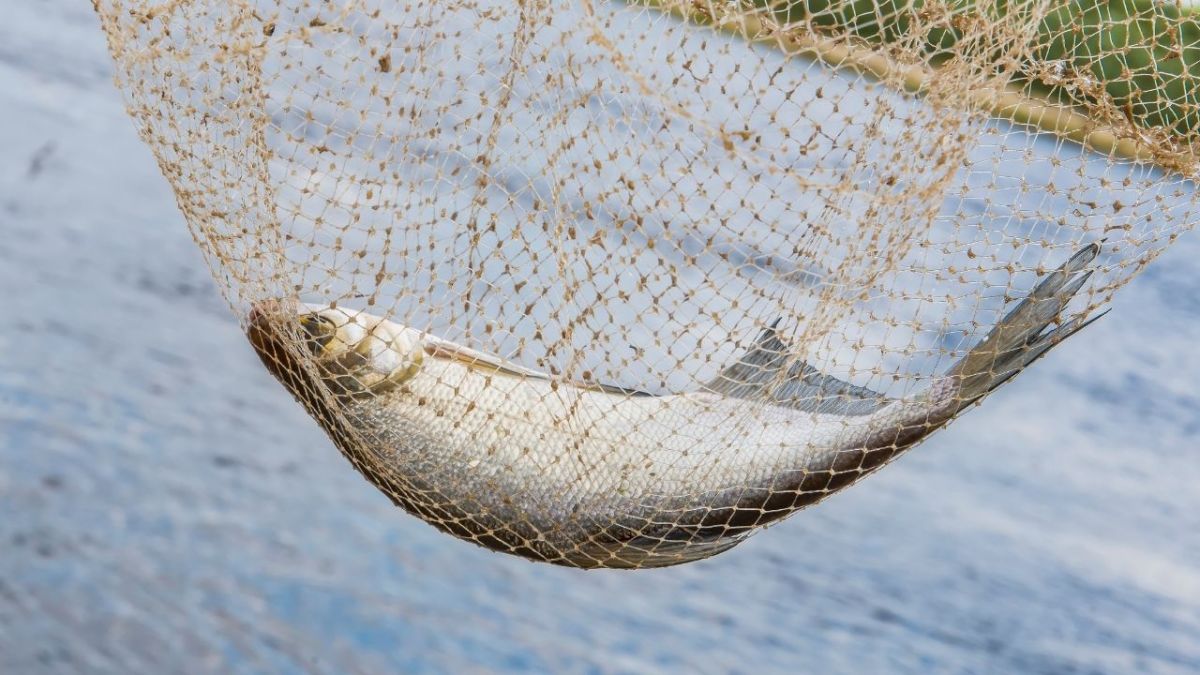
Net fisching
Substantiv/Nomen
Meaning
Net fishing is a traditional method of catching fish using nets. It is a valuable skill in the world of survival, bushcraft, and outdoor activities. Net fishing involves setting up a net in a body of water, such as a river or lake, to trap and catch fish. This technique is often used in situations where other methods of fishing may not be feasible or efficient. Net fishing requires knowledge of fish behavior, understanding of water currents, and proper net placement. It is an essential skill for anyone venturing into the wilderness or engaging in outdoor activities like camping, hiking, or survival situations.

Examples
„I love going fishing in the wilderness, and one of my favorite techniques is net fishing. It's a great way to catch a large amount of fish at once.“
„Net fishing involves setting up a large net in the water and waiting for the fish to swim into it. It requires patience and skill to position the net in the right spot.“
„Once the net is set, you can leave it for a while and come back later to check if any fish have been caught. It's always exciting to see what you've caught in the net.“
„Net fishing is a sustainable method of fishing because it allows you to catch only what you need and release the rest. It helps to maintain the balance of the ecosystem.“
„Net fishing can be a team effort, with each person responsible for a different part of the process. It's a great way to bond with friends or family while enjoying the outdoors.“
Origin
The word "net fishing" originates from the practice of using nets to catch fish. It has its roots in ancient civilizations, where people discovered that using nets was an effective way to capture a large number of fish at once. Net fishing has been practiced for thousands of years and can be traced back to various cultures around the world.
Net fishing has evolved over time, with different techniques and materials being used. In the past, nets were made from natural fibers such as hemp or cotton. Today, nets are often made from synthetic materials like nylon, which are more durable and resistant to water damage.
Net fishing is a versatile method that can be used in various environments, including rivers, lakes, and oceans. It can be done from the shore or from a boat, and different types of nets are used depending on the target species and fishing location.
Net fishing is not only a practical method for catching fish, but it is also an important cultural and historical practice. It has been passed down through generations and is still used by many communities around the world as a means of sustenance and livelihood.
Synonyms
Net fishing, Mesh fishing, Gillnetting, Seine fishing, Trammel net fishing, Drift net fishing, Entangling net fishing, Scoop net fishing
Antonyms
Landfishing, Spearfishing, Angling, Handfishing, Trapping, Bowfishing, Icefishing, Flyfishing
Relatives
Angling, Fishing, Cast net, Gill net, Seine net, Fishing net, Fish trap
Historical and cultural importance
Net fishing has a long history and cultural significance in many societies around the world. It is a traditional method of catching fish that has been practiced for thousands of years, dating back to ancient times.
In many indigenous cultures, net fishing was not only a means of survival but also an important part of their cultural identity. It was often passed down from generation to generation, with specific techniques and knowledge being shared within the community.
Net fishing played a crucial role in the development of early civilizations, providing a reliable source of food and enabling communities to settle in areas near water bodies. It allowed for the establishment of permanent settlements and the growth of trade and commerce.
Throughout history, different types of nets have been used for fishing, including hand nets, cast nets, gill nets, and seine nets. Each type has its own unique characteristics and is suited for different fishing conditions and target species.
Today, net fishing continues to be practiced in various parts of the world, both for subsistence and commercial purposes. It is an important method of fishing in many coastal communities and is also used in freshwater environments.
Net fishing requires skill, patience, and an understanding of fish behavior and habitat. It is not only a practical way to catch fish but also a way to connect with nature and appreciate the delicate balance of ecosystems.
Whether you are a survivalist, an outdoor enthusiast, or simply curious about traditional fishing methods, learning about net fishing can provide valuable insights into the history and cultural significance of this age-old practice.
More information about the term Net fisching
Net Fishing: A Timeless Technique for Survival
Net fishing is a versatile and effective technique that has been used for centuries by survivalists and fishermen alike. This method involves the use of a net to catch fish in bodies of water such as rivers, lakes, and even the open sea. In this article, we will explore the art of net fishing and its importance in the world of survival.
The Basics of Net Fishing
Net fishing involves the use of a net, typically made from strong and durable materials such as nylon or monofilament. The net is designed with small holes that allow water to pass through while trapping fish inside. It is important to choose the right size and type of net for the specific fishing environment and target fish species.
When net fishing, the net is cast into the water and then pulled back, either manually or with the help of a boat or other equipment. The net is then carefully inspected to see if any fish have been caught. This process can be repeated multiple times to increase the chances of a successful catch.
The Advantages of Net Fishing
Net fishing offers several advantages over other fishing techniques. Firstly, it allows for the capture of multiple fish at once, making it a more efficient method. This is especially beneficial in survival situations where food resources may be scarce.
Secondly, net fishing can be done in various water environments, including shallow rivers, deep lakes, and even the open sea. This versatility makes it a valuable skill for survivalists who may find themselves in different geographical locations.
Furthermore, net fishing can be a passive technique, allowing the survivalist to set up the net and attend to other tasks while waiting for a catch. This makes it an ideal method for those who need to conserve energy or multitask in a survival situation.
Net Fishing Tips and Techniques
While net fishing may seem straightforward, there are some tips and techniques that can increase your chances of success. Here are a few key points to keep in mind:
1. Location: Choose a fishing spot where fish are likely to gather, such as near vegetation, rocks, or underwater structures.
2. Timing: Fish are often more active during certain times of the day, such as early morning or late afternoon. Plan your net fishing activities accordingly.
3. Camouflage: Avoid scaring away fish by wearing clothing that blends in with the surroundings and moving slowly and quietly.
4. Proper Casting: Master the art of casting the net to ensure it spreads out evenly and covers a wide area. Practice your casting technique to improve accuracy.
5. Patience: Net fishing requires patience, as it may take some time for fish to become entangled in the net. Be prepared to wait and monitor the net regularly.
Conclusion
Net fishing is a timeless technique that has proven its effectiveness in survival situations throughout history. By mastering this skill, you can increase your chances of securing a valuable food source in the wild. Remember to always follow local fishing regulations and practice responsible fishing techniques to preserve the natural environment for future generations.
Back to overview

